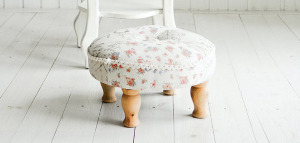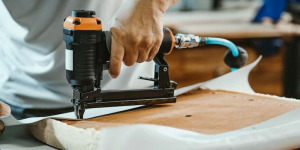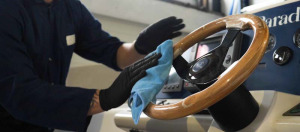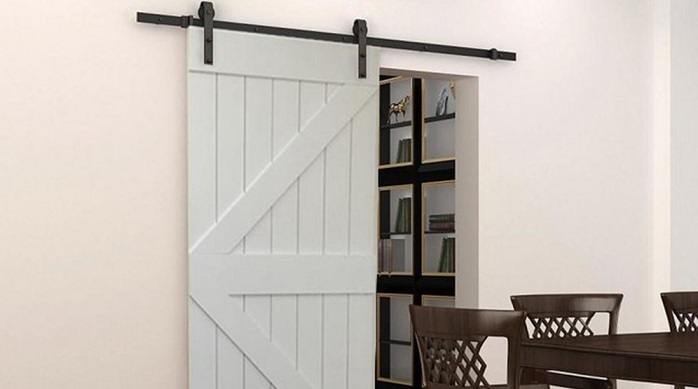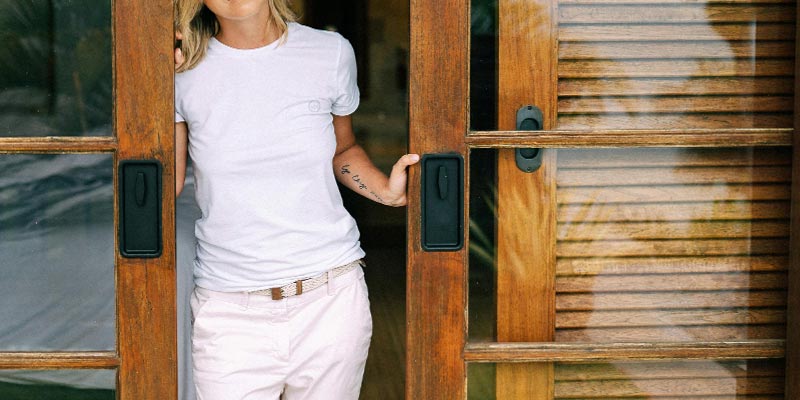Unlike other materials, painting timber and plywood walls present some unique challenges. In this article, Sara explains how to paint a plywood wall or other timber wall correctly, including preparation, priming and selecting the right house paint and primer for wood.
Priming and painting plywood walls is something I have become very familiar with in the past few years. The prefabricated fixer-upper house that we bought is constructed largely of plywood, and as the painter of the household, I was tasked with bringing it up to scratch.
Despite the house being 20 years old, with three other owners before us, the interior had never been painted. The bare plywood walls still had pencil markings from the builders on them. The rough finish picked up dust and made the interior seem dirty, dark, pokey and unfinished. Why no one had ever thought to paint the walls confounded me.
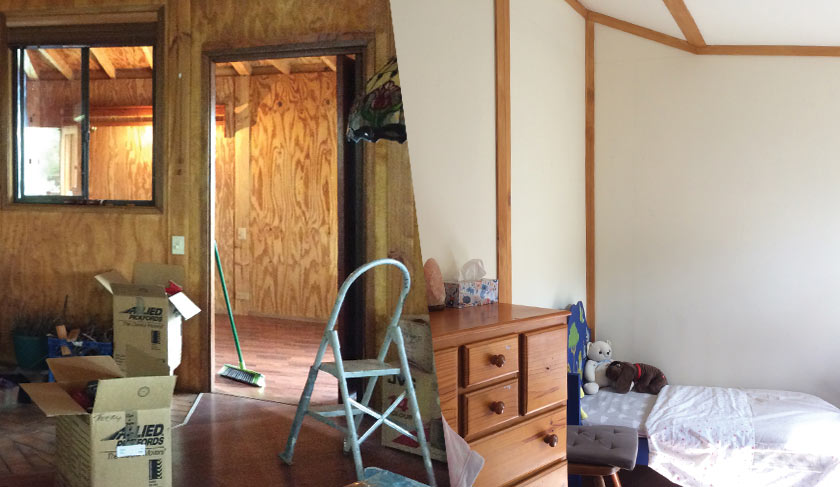
Through the process of planning, preparing, priming and painting the plywood walls in our home, I learnt a lot about how painting timber walls differs from plasterboard. Understanding how to paint a plywood wall, timber wall or other wooden surfaces is not necessarily difficult, but does require some advance knowledge and planning.
In this post I share what I’ve learnt about how to paint a plywood wall and timber, how to choose and use the right paint and primer, and preparation tips.
Preparing, Priming and Painting Plywood Walls
When working with timber and plywood walls, there are three essential steps you must follow, and all are equally important:
- Prepare the plywood
- Prime the plywood
- Paint the plywood
While many DIY’ers are keen to jump straight into painting, I cannot emphasize enough how important it is that you do not skip the preparation and priming stages when working with timber. You might be able to get away with skipping preparing and priming plasterboard walls (barely), but that sort of corner-cutting is not going to work on plywood.
Many people feel that wood surfaces like plywood are, without a question, some of the hardest surfaces to paint. The reason for this is because of their ability to absorb large amounts of paint, as well as the inherent oils and tannins in the timber that can seep through paint over time. As a result, preparation is key to properly painting the plywood.
Step 1: Prepare the Plywood Walls
#1 Fill in any gaps
Let’s face it, plywood is not a perfectly smooth surface. No matter how much we would love to be able to go out and buy a sheet of plywood and have it perfectly smooth, it will always have imperfections that need to be filled.
As a result, the first step in preparing plywood to be painted is to fill in any gaps, cracks or knots. Not only will this smoothen the surface, but it will also create a barrier between any knots and the paint, which will help lessen the amount of oils and tannins that seep through.
For this, you will need wood filler and a putty knife. There are plenty of wood fillers from your local hardware, and they are all easy to apply; it just takes time to do and dry. Simply use the scraper or putty knife to fill in any holes or large gaps on the face of the plywood, with the putty or filler. Once the wood filler has cured completely, then you need to sand it smooth.
#2 Cover or round edges of plywood
The edges of plywood can be very difficult to paint because they absorb so much paint. They are also very jagged, and not nice to look at. As a result, it is always recommended that you either cover the edge of plywood or you round the edges off completely. This is an important step, as it reduces the chances that the ply on the outer edge may be chipped or broken off. Make sure to fill in the edges of any exposed plywood with wood filler, and sand it smooth as well.
#3 Level the plywood wall with compound (optional)
Even after filling in all of the gaps within a sheet of plywood, it is still not perfectly smooth. Unless you plan on having a wood grain finish, you will need to go through the effort of leveling out the surface with some joint compound and a large putty knife.
To do this, get yourself some joint compound and a putty knife. With the putty knife at roughly a 70-degree angle, pull it across the plywood so that the compound is pressed into any and perfections on the sheet. You may want to go across each sheet in both directions to ensure that all of the wood grain is fully filled. Let the joint compound dry out overnight, and sand it in the morning.
If you like wood grain texture, like me, then you can skip this step. Still make sure to fill in any large holes and knots in the previous step, however, as those won’t look good when painted in most cases.
#4 Sand the plywood wall
Next, you want to sand the surface to make it nice and smooth.
You will want to use an electric sander for this, as sanding walls by hand is extremely tedious and tiring. A light, handheld sander is best. If you don’t own one, borrow one or buy one. You can buy some nice, lightweight sanders for $100-200 which are totally worth it, even if this is the only job you’ll ever use it on.
If you haven’t used any joint compound, sanding is fairly easy. Different plywood will have different coarseness, so the sandpaper will depend on your particular plywood wall. From memory, I used 140 grit sandpaper, except for rough areas where I used 80 grit sandpaper followed by 140 grit. Now, just because that is what I used and worked for our house, doesn’t mean it will be the same for yours.
If in doubt, start with a fine grit sandpaper; if it is too slow to smooth out or isn’t doing anything, gradually try more coarse sandpaper, until you find the one that hits that sweet spot. If the sander leaves scratches on the wall, then the sandpaper is too coarse, and you’ll need to go over it with finer sandpaper.
How to Sand over Joint Compound Properly
Sanding joint compound can be a tricky process. Chances are unless you have had a lot of experience with laying joint compound, then you probably put it on extremely thick. As a result, the amount of sanding you are going to need to do will be greater. It’s always best to start the process by using a power sander to take off the excess compound and then later switch to sanding the wood by hand with a finer grit.
After you have roughly leveled out the surface with the power sander, it is time to start sanding by hand. Because of how soft the joint compound is, there is a certain technique that will help make sanding it an easier task. Rather than sanding in one direction or another, you want to stand instead in circular motions. This will allow you to create a more uniform surface. If you sand in one direction or another, you will create grooves or waves on the surface.
#5 Wipe with a damp rag to remove dust
Before you begin priming, wipe the plywood wall with a damp rag to remove dust.
After you have sanded all of the plywood surfaces, it’s time to clean up the surface before you can even prime it. Just because it may look clean, and even feel clean, chances are that the surface is still covered with dust. This dust will interfere with your ability to properly coat the surface, making the painting process a lot harder. Before you begin to prime, make sure to wipe down the surface multiple times in every direction in order to pick up every single particle of dust invented within the board.
Step 2: Prime the Plywood
Once the surface of the plywood has been properly prepped and is smooth, we move onto the next stage: priming. Many amateur homeowners skip priming because they think it’s a waste of time and don’t understand what primer does.
This is a big mistake, because:
- Primer makes the top coat adhere better
- Primer prevents paint soaking into the surface, meaning you will use less paint
- Oil-based primer stops oils and tannins from the wood seeping through the dried paint
- If you used joint compound, the wood will absorb a lot of paint between the wood and compound if it’s not primed.
After priming, remember to sand the walls again. Sanding should be done between every coat of primer and paint. Unlike plasterboard, primer and paint raise the grain of plywood or timber making it quite rough to the touch. If you don’t believe me, go ahead and prime the walls, let it dry, then run your hands over it. It will probably feel prickly like a 3-day old shave, and I’m sure you’ll agree that it needs sanding.
How to Choose Primer for Plywood
When you paint plywood and timber, you should always use oil-based primer.
You will want to use a high-quality primer. You may be able to find a specialty plywood primer, or else an oil-based primer suitable for wood and timber is best. Oil-based primers are thick, contain toxic chemicals and will need solvents to clean up, so it is important to make sure that the area is well ventilated.
Oil-based vs Water-based Primer
When you choose primers for wood, go for oil-based primer. This is because oil-based primers block oils and tannins from the timber from rising through the dried paint layers and creating ugly discolorations on the top coat.
If you use water-based primer, no primer, or too little primer as I’ve discovered, then you will end up with brownish colored blotches on your wall over time. This is especially true in any spots where there are knots in the timber. You might not see this happen straight away, but they will appear; in our home, they only became noticeable after about 3-4 years.
See:

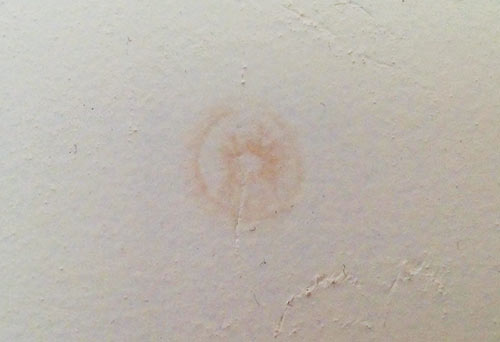
These pictures show the blotches on the walls in my daughter’s bedroom which I painted while pregnant (which I don’t recommend doing, by the way). This was the last room I painted in the house, and the can of primer was near the end. Rather than buying a new tin, to save money, I rolled a very thin coat of primer throughout her room.
Now, 4 years on, this has happened. All because I wanted to save a bit of cash. D’oh! I fear those blotches will become more visible as time goes on, and I’ll have to repaint the whole room again sooner than planned. Sigh. I quite regret not buying an extra tin of oil-based primer and coating the walls properly with it. I hope you learn the same lesson, before the damage is done!
Cleaning Brushes and Rollers
When using rollers for primer, I use brand new roller heads each time and throw them in the trash afterwards. I don’t like sending stuff to landfill unnecessarily, but trying to clean a roller head full of nasty thick oil-based primer is just not worth the headache for me.
Brushes aren’t as difficult to clean as rollers, so I always buy good quality brushes and wash them afterwards. I suggest you use a different set of brushes for priming than painting. This means you don’t accidentally use brushes that have previously been exposed to solvents, with water-based paints. It’s probably not a big deal if you wash them properly, but it’s just a habit I’ve gotten into.
Step 3: Paint the Plywood Walls
Once the primer has had the opportunity to dry out thoroughly, and your paintbrushes and rollers are ready to go, it is time to start painting your wall.
How to Paint a Plywood Wall
There is nothing special you need to learn for how to paint a plywood wall. The technique you will use for painting plywood walls is the same as for any other house painting, which we cover in these articles on how to paint a house interior with a roller and how to paint with a sprayer.
While it’s not as big of an issue if you are using a roller, when painting on plywood walls and trims using a brush it is important to ensure the length and consistency of your brushstroke. Otherwise, you may end up with a lot of paint lines on the wall. It’s always best to paint the corners with a brush and paint the large surface areas using a roller. This ensures the most consistent coating possible.
How to Choose Paint for Plywood
As long as you have used an oil-based primer on the plywood walls first, you can pretty much use any regular wall paint.
- Yes, you can use a water-based paint over an oil-based primer.
- Yes, you can use an oil-based paint over an oil-based primer (if you want to).
- No, you don’t have to use oil-based paint over an oil-based primer.
The reason I am pointing this out is because I come from a fine art background, and applying water-based acrylics over oil-paints is a huge no-no in fine art painting. But for some reason, the same rule doesn’t apply in house painting. I spent literally hours looking up how to paint a plywood wall, and in particular whether it is ok to apply water-based house paint over oil-based primer, and it is.
As an example, I painted two separate dwellings myself, both of which had plywood walls of different types and ages. I used oil-based primer on both. Over the top, I used a regular water-based paint on both, same as you would use on plasterboard. That was 4-5 years ago. No peeling and no problems whatsoever.
So, what I am saying, is for your top-coat paint, just go to your local hardware store and pick up whichever water-based paint for walls suits you. I used a latex-like paint on the living room and bedroom walls, and a water-based paint designed for kitchens in the kitchen.
Just make sure you have used an oil-based primer underneath first, to block any oils and tannins from the wood seeping through the top-coat paint.
Final Thoughts on How to Paint Plywood Walls
I hope this article has given you a good insight into how to paint a plywood wall and timber walls. The most important take-home points are:
- Fill any gaps, knots and holes with wood filler.
- Sand the walls between every coat of primer and paint.
- Yes, you can use a water-based house paint over an oil-based primer.
- Use an oil-based primer, not water-based.
- Apply a proper coat of primer, don’t be a tight-ass.
- For god’s sake, prime your plywood walls! Don’t skip this step. Seriously. If you’re still doubting this, go back and read the section on priming.
Happy painting!
Sources for how to paint a plywood wall:
- WikiHow https://www.wikihow.com/Paint-Plywood
- Home Building https://www.homebuilding.co.uk/advice/painting-plywood
Author
-

Hey, I’m Sara, co-owner of NestKoo! I’m a graphic designer and professionally trained fine artist, with a Bachelor of Arts (Fine Art) majoring in Painting. I love being close to nature, sustainable living and bringing new life to old things. My specialty in NestKoo is DIY house painting, upholstery and furniture upcycling, where I bring my skills in fine art painting and contemporary design together into a practical home DIY context.
View all posts


